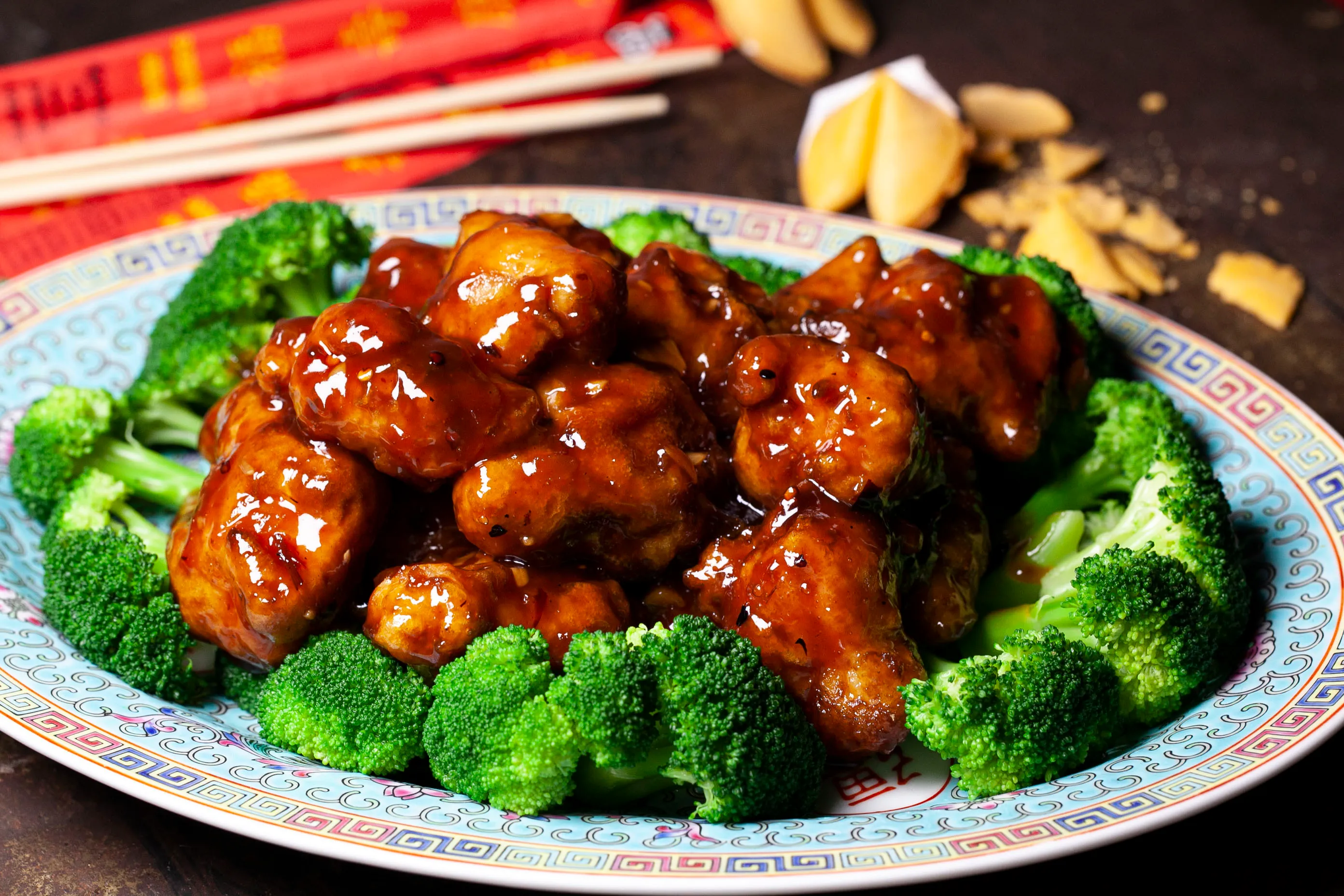After the first coronavirus outbreaks in central China’s Hubei province in January, people all over the country were confined to their homes amid lockdown orders.
Months of quarantine and social distancing meant that many industries had to rely heavily on technology to stay in operation. In many cases, this meant relying on China’s existing infrastructure of “super apps” — with built-in capabilities that allow users to do things like send money, order food, and watch movies off of the same, or sister, platforms.
From food to retail, technology has changed aspects of daily life in China throughout most of 2020. But as China recovers from the pandemic and life returns to relative normalcy, how permanent will these changes be?
Food
As consumers stopped dining out in late January, China began relying heavily on its online food delivery sector, which is dominated by Meituan and Eleme. Both companies quickly adapted to the epidemic by introducing contact-free protocols the same month for drivers, which delivery companies elsewhere in the world would eventually imitate.
Even months later as China recovers, the coronavirus has already reshaped the Chinese catering sector as restaurants rebalance their dining-in and delivery services. In the first three months of 2020 alone, more than 50% of Meituan’s highest-ranked restaurants enrolled in online food delivery, according to Meituan Research Institute. Traditionally more popular among office workers, meal delivery became commonplace in most households as families were under quarantine.
Related:
 Why China’s Food Delivery is Better Than YoursIn terms of scale, accessibility, and innovation, China’s food delivery is just plain better – here’s whyArticle May 12, 2020
Why China’s Food Delivery is Better Than YoursIn terms of scale, accessibility, and innovation, China’s food delivery is just plain better – here’s whyArticle May 12, 2020
Though some shopping malls reopened as early as March, very few customers actually went, says Derek Luo, assistant to the CEO of Helü Sushi. The restaurant chain, which has more than 100 stores in mainland China, relied on food delivery platforms to provide takeout services in order to boost business. “Delivery was only 5% of our sales before,” Luo tells RADII. “Due to the impact of the pandemic, it has now doubled.”
Delivery platforms have also taken the opportunity to further diversify their services. Before the pandemic, both Eleme and Meituan delivered daily necessities, groceries, and prescription drugs as well as meals — transactions by percentage saw a visible increase in all of these areas. In February alone, nearly 40% of all Meituan delivery sales were supermarket items — an increase from just 18.6% back in 2019. The percentage stabilized to between 20% and 25% in April and May, however, as Chinese cities began to reopen. But grocery platforms like Alibaba’s Hema Fresh, which had relied upon online models in the first place, had become habitual for many individuals, and cemented their place in their daily transactions.
Amid economic stagnation and rising unemployment, the food delivery sector also created job opportunities for affected workers that were laid off during the lockdown. Around 380,000 people joined Meituan as drivers in March alone — and a total of 1.39 million joined in the first half of 2020 — as China was beginning to reopen and recover from the pandemic.
Related:
 5 Million People in China Have Lost their Jobs Thanks to Covid-19 – Here’s How They Are CopingWhether choosing to wait, act or adapt, Chinese citizens are coping with coronavirus-related job loss in a number of different waysArticle Apr 14, 2020
5 Million People in China Have Lost their Jobs Thanks to Covid-19 – Here’s How They Are CopingWhether choosing to wait, act or adapt, Chinese citizens are coping with coronavirus-related job loss in a number of different waysArticle Apr 14, 2020
Close to 30% of them, according to a Meituan survey, said they joined the platform due to income loss from the coronavirus. Many, too, saw food delivery as a buffer zone between jobs in other industries.
Retail
The first months of 2020 were especially difficult for China’s retailers. Historically, one of the peak seasons for shopping is the Lunar New Year — an annual spree that never materialized this year thanks to the outbreak in January. With shopping malls closed and shoppers confined at home, the total sales of consumer goods in the first quarter dropped by nearly one-fifth compared to a year ago.
Not surprisingly, Chinese consumers turned to ecommerce platforms to shop. Alibaba — which owns Taobao and Tmall, two of the largest ecommerce platforms in China — saw its first quarter revenue rise 22% year over year. Other ecommerce platforms performed similarly — Taobao competitor Pinduoduo saw an even higher rise at 44%.
Yet it was not just the expected online shopping services that took advantage of the lockdown. While stuck at home, China’s internet users spent more time on their smartphones to entertain themselves — a perfect opportunity for the country’s booming livestreaming industry.
Make no mistake, livestreaming ecommerce was already thriving in China prior to the coronavirus. Influencers like Li Jiaqi, known in China as the “lipstick king,” have sold millions of dollars’ worth of products on livestreaming platforms. Even Kim Kardashian West appeared on a livestream last year ahead of Singles’ Day — one of China’s biggest shopping holidays — selling 15,000 bottles of her namesake perfume in a few short minutes.
Related:
 Kim Kardashian West Joins China’s Livestreaming Ecommerce Craze Ahead of Singles’ DayKim Kardashian made a guest appearance with top livestreamer Viya Huang, and sold out 15,000 bottles of her namesake perfume in minutesArticle Nov 08, 2019
Kim Kardashian West Joins China’s Livestreaming Ecommerce Craze Ahead of Singles’ DayKim Kardashian made a guest appearance with top livestreamer Viya Huang, and sold out 15,000 bottles of her namesake perfume in minutesArticle Nov 08, 2019
Brands and vendors had considered livestreaming as one of the channels to make themselves known — yet the widespread lockdown made many of them realize the platform’s great potential. At the height of China’s coronavirus outbreak in February, the number of vendors on ecommerce platform Taobao that had opened up livestreaming channels increased by 719%, according to statistics from Alibaba.
In addition to internet celebrities, livestreamed ecommerce also appealed to usually taciturn Chinese officials, who were struggling to cope with economic stresses at home. In March, a deputy mayor in Guizhou province set up a livestream to sell agricultural produce from his hometown, and three hours of broadcasting were repaid with a revenue of 1.96 million RMB (around 287,300USD). China’s state broadcaster CCTV even cooperated with popular livestreamers in April to help sell products from Hubei province, the epicenter of the early coronavirus outbreak.
Related:
 Behind the Scenes with an Androgynous Livestream StarLivestreamer Little Zhouzhou, who fell into beauty blogging quite by accident, exemplifies the changing face of masculinity in ChinaArticle Jul 10, 2019
Behind the Scenes with an Androgynous Livestream StarLivestreamer Little Zhouzhou, who fell into beauty blogging quite by accident, exemplifies the changing face of masculinity in ChinaArticle Jul 10, 2019
As China recovers from the coronavirus, livestreaming has remained a convenient (and lucrative) platform for traditional retailers and online celebrities to collaborate for clicks and sales. Luo Yonghao — the much-memed CEO of Chinese smartphone company Smartisan — set a new record for revenue during his livestreaming ecommerce debut in April. Attracting over 50 million viewers, Luo made 110 million RMB (around 16 million USD) of products in a few short hours, selling all sorts of products from smartphones to crayfish.
Entertainment
Movie theaters were some of the last to reopen after the initial outbreak in China. By the time cinemas finally resumed business in July, they had been closed for over half a year. The country’s film industry suffered a catastrophic hit as a result; Wanda Films, one of China’s largest cinema chains, estimated losses of more than 200 million USD.
Related:
 Chinese Cinemas Finally Set to Open AgainA number of guidelines were released by China’s National Film Administration as cinemas in low-risk areas prepare to re-open this monthArticle Jul 16, 2020
Chinese Cinemas Finally Set to Open AgainA number of guidelines were released by China’s National Film Administration as cinemas in low-risk areas prepare to re-open this monthArticle Jul 16, 2020
Lost in Russia, directed by Xu Zheng, was supposed to be in theaters for the Spring Festival season in late January. But with cinemas closed, its production team turned to online platforms instead, selling the film’s copyright to tech company Bytedance — which owns video platforms Douyin, Toutiao, and Xigua Video — for 630 million RMB. For the first time in China’s history, a movie premiered on short video platforms — for free — before showing in theaters.
Similarly, director Ray Chow’s new film Knockout was premiered in April on streaming platform iQiyi before it was released in Hong Kong theaters in May. Enter the Fat Dragon, starring Donnie Yen, was set to premiere in mainland Chinese theaters in February, but was eventually released online.
Of course, it’s unlikely that online video services will keep buying films and releasing them for free. Yet in the long term, it’s possible that more Chinese films will collaborate with internet giants to make their debut online, not unlike what Disney is doing with its live-action adaptation of Mulan.
Related:
 “Mulan” Set for Disney+ Release in SeptemberThe highly-anticipated film will go straight-to Disney+ in countries where a cinema release is not possibleArticle Aug 05, 2020
“Mulan” Set for Disney+ Release in SeptemberThe highly-anticipated film will go straight-to Disney+ in countries where a cinema release is not possibleArticle Aug 05, 2020
Health
Perhaps the most drastic change to come about during the outbreak was the normalized use of a color-coded health code. These QR codes, which changed from green or red depending on the individual’s risk of carrying Covid-19, were dependent on factors such as travel and cellphone data in correlation with reported cases, although the system’s criteria was largely opaque. Frequently dubbed an “epidemiologist’s dream and a surveillance nightmare” by English language media outlets, these QR codes were often city-specific, and generated through the country’s most widely used apps such as WeChat and Alipay. For months, they were a necessity for Chinese citizens to travel and enter public spaces — provided they could generate a green-colored code.
As other countries have since struggled to track domestic Covid-19 cases, speculation has swirled on whether or not China’s QR codes have set a precedent in using big data to track and collect public health information. But when officials in Hangzhou — the first city in China to utilize QR codes during the pandemic — proposed implementing a permanent health code that would affect citizen’s social credit scores, residents pushed back online, with many saying that it was a violation of their privacy.
Related:
 6 Ways China Has Turned to Tech to Tackle the CoronavirusAttempted technological solutions have come to the fore as China grapples with 2019-nCoVArticle Feb 05, 2020
6 Ways China Has Turned to Tech to Tackle the CoronavirusAttempted technological solutions have come to the fore as China grapples with 2019-nCoVArticle Feb 05, 2020
Similar concerns were voiced by Chinese authorities and media outlets. Hu Xijin, Editor-in-Chief of state-owned publication Global Times, spoke out against the normalization of health QR codes shortly after Hangzhou announced the plan, citing that it may threaten privacy.
However, these privacy concerns are not necessarily shared across the board. In a July survey conducted by People’s Tribune, over 90% of respondents said that they hoped health codes would play a bigger role in health, urban governance, transportation, and tourism going forward. Vice President of Tencent Cloud, Luo Chaoliang — the man in charge of Tencent’s health codes — also spoke out in favor of implementing the QR codes long term, saying that the benefits would outweigh the potential harm.
With public opinion divided, it seems possible that areas of China may move forward with implementing a QR code anyway. Even more likely is that the QR codes may be updated or integrated into existing health services, as institutions increasingly tap the potential of big data. According to The Economic Observer, the city of Guangzhou is currently considering a plan to upgrade Covid-era health QR codes by integrating them into government services.
Uncertainties Ahead
Though China has mostly contained the coronavirus outbreak on its shores, the post-Covid era has yet to arrive. Many citizens are still cautious about offline consumptions, and it is uncertain which industry trends over the past months will become long-term consumer habits.
On the other hand, the nation will — at least for some time — live in the shadow of the pandemic’s economic hits. This has meant permanent closures of vendors, restaurants, and merchants, as well as shifts in the the purchasing power of consumers that could last for years.
Though it is perhaps too early to tell if Covid-19 has revolutionized its internet sector, China’s citizens are unlikely to forget the pandemic — and the dependence it created on technology — anytime soon.
Additional reporting: Siyuan Meng















